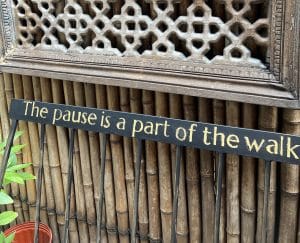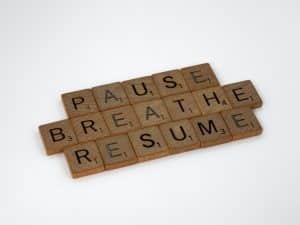
Recently, I was listening to an episode of a podcast I really like in which the main topic was the psychology of waiting. Every statistic, example, and anecdote that the host and guests discussed sounded like it came straight from the notes of my entire professional career in higher education, admissions, and coaching. So much of my work has been on one side of the waiting game or the other — waiting for applications to come in, waiting for admitted students to make their enrollment decisions. Now, I wait with the applicants I coach, counting the days until interview invitations and decision announcements come through.
Of course, I’m human, and have my own experiences with waiting under my belt.
I’ve been an applicant waiting for decisions (for school and jobs). I’ve been a patient or a loved one waiting for a result. I’ve been a person living in 2020, and now these early weeks of 2021, wondering how two weeks in March became 10 months, and counting.
Waiting is a face-to-face encounter with the discomfort of uncertainty. It’s an exercise of willpower, and a test of sanity. It can reveal how much something truly means to us, and show us the full expanse of our imagination as we envision events turning out one way, and then the other — a tendency the podcast episode discussed at length. Is it better to expect the worst, or focus on things working out? It’s a fascinating convo.
All the while I listened, the same thought kept going through my head. A word, actually. Yup, you guessed it.
Mindfulness.
Nobody likes discomfort. Naturally, we try to remedy it to make it disappear. Discomfort in the shape of uncertainty is only remedied by certainty. Since waiting normally means we aren’t in control of the thing we’re waiting for, there’s also that. What do you do when you’re out of control? You look for things you can control. So, in the space of waiting for, say, an admissions decision, your mind will wander out of the discomfort of not knowing in two directions: back to the past, and forward to the future.
The past is when you prepared your application materials, hit that thrilling/terrifying “submit” button, completed the interview, sent the thank you note, etc. There’s no time like downtime to rifle through those memories to think about all the things you may have done wrong, or missed, or that could have been done better. Hindsight isn’t great for those memories, either, as chances are the more you think about your work, the less confident you feel about it.
The future is where you either get in or you don’t. Those are two possible options, so you have two storylines to write. Most people lean in one direction or the other with that exercise, and the podcast has some interesting notes about the pros and cons of thinking “half full” vs. “half empty.” Either way, though, you’re still imagining.
The truth about the past and the future is that they’re not real. They don’t actually exist, at all, anywhere. The space that does exist, however, is right now. That’s the space we all have to learn to be in — even when it’s uncomfortable, awkward, annoying, boring, or scary. Even when it feels like it will never end. It always does. In fact, even as you’ve been reading this section, one second has become another. This exact moment is perfectly present, and always moving. It’s also always exactly where you are.
Mindfulness practices are incredible tools for learning to breathe, and simply be, in the spaces that make us uncomfortable. They can help us release what we can’t control or have access to right now so that we fully engage with what we can. When the waiting finally ends, mindfulness supports you in working with whatever emotions may arise — fully experiencing joy or relief, and fully feeling, and then surviving, disappointment or sadness.
Nothing about our lives is permanent. Discomfort passes, waiting ends, elation fizzles, and disappointment softens. Mindfulness is about keeping us present on the journey, and ensures that no moment of it is wasted being anywhere else — most especially, in places that don’t truly exist.
Photo credit: Thao Le Hoang




3 thoughts on “Are we there yet?”
Myself and my partners counselor are trying to get my partner, to do this more. He had a big panic attack last year, so we’re both trying. I don’t think he’s doing it though. You can’t push someone into doing it, unfortunately.
Absolutely – the most important thing is that you’re both there to support him. When someone is in a state of panic, exercises that ground energy can be really helpful. I’m sure the counselor has shared them. Other mindfulness practices will be there in time, when and if he’s in a better place to make use of them. Sending strength to you all!
Thank you <3